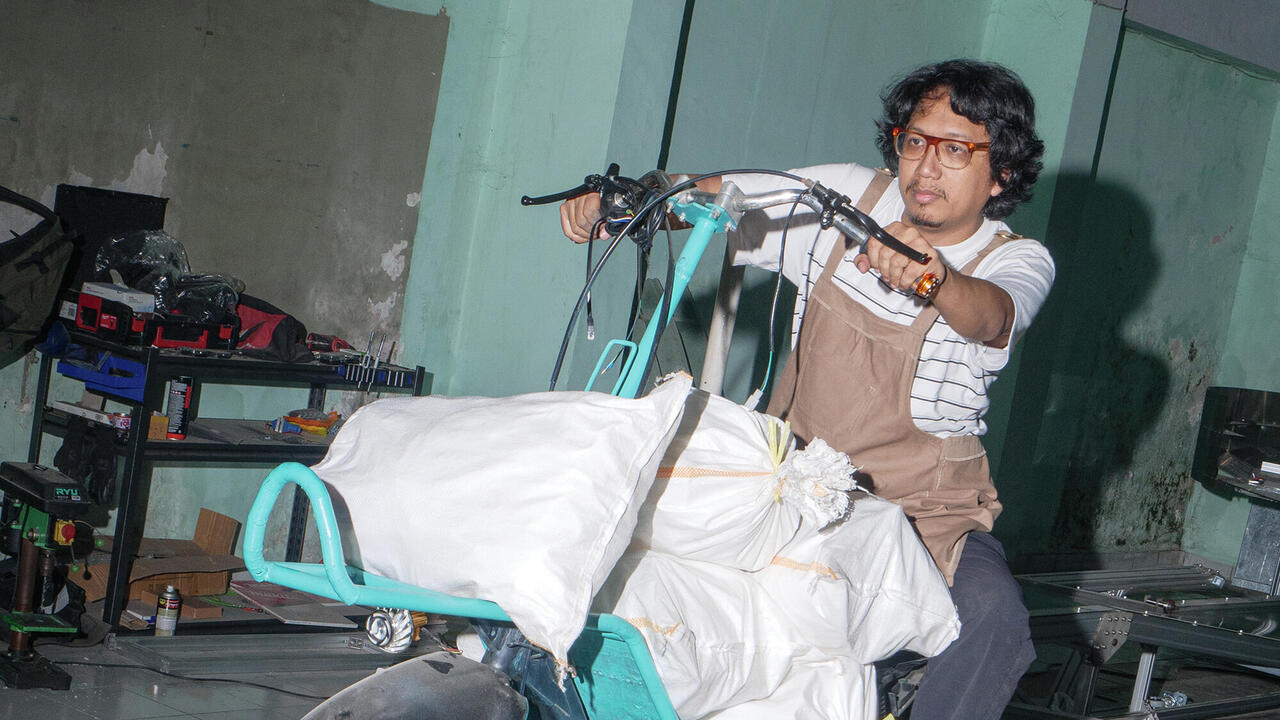Anicka Yi
Kunsthalle Basel, Switzerland
Kunsthalle Basel, Switzerland

Although all of the works on display were dated 2015, Anicka Yi’s solo show at Kunsthalle Basel was actually a summation of five years of intense production and exhibitions. The exhibition felt like a retrospective sweep over several bodies of work in which Yi stages clashes between future and past, organic growth and rot. The works displayed were not replicas but, rather, variations of previous pieces, while the exhibition’s title, ‘7,070,430K of Digital Spit’, referred to one of Yi’s earliest sculptures, 235,681K of Digital Spit (2010), a succinct if troubling work, in which a transparent plastic Longchamp handbag is filled with hair gel and tripe. What exactly ‘digital spit’ might be remained unclear, but its yoking of the technological to the visceral is a leitmotif that runs throughout Yi’s work.
The exhibition began in a darkened room with seven aquarium-like tanks arranged on the floor, each filled with a thick layer of a vivid green ‘ultrasonic gel’, pierced with pins and illuminated by strip lights (Shameplex, 2015). It then traversed three further bodies of work – discrete sculptures crafted from nutrient agar, soap and bacteria, displayed in inset nooks like high-end consumer wares; dryer doors which open to release specially concocted aromas; and a room of reliquary-like arrangements of synthetic leather made from Kombucha yeast and bacteria. The finale was a trio of lumpy, vaguely anthropomorphic monuments made of barnacle-like clusters of tempura-fried flowers, dripping with coloured resin, each individually sealed in a zippered transparent plastic pod – a sci-fi landscape of controlled decay, where Dieter Roth meets Mariko Mori.
As a whole, the exhibition solidified Yi’s material vocabulary. Her volatile, ephemeral substances – mould, agar jelly, tempura-dipped flowers, soap, aromas – appeared more static and controlled than in previous, more experimental pieces. Yi’s seemingly urgent earlier search for materials and processes to represent the flux and contradictions of a technology-saturated, hyper-consumerist and over-medicated present settled here into a surprisingly clean and conclusive show. Instead of precarity and entropy, transformation and contamination, there were rituals of display and preservation: the boutique-like presentation of objects in the second room; remnants of Kombucha leather hanging like flaps of skin, or Turin-shrouds, on steel armatures; sterile plastic pods. Formalism came to the fore along with a self-referentiality bordering on hermeticism. References pointed back to their own, often cryptic, origins, leading to an evacuation of the urgency and meaning in the seductive phrases that surround Yi’s work – ‘techno-sensual alchemy’ or ‘anthropomorphic minimalism’.
The retrospective was summed up in two gestures that perhaps function better in description than in actuality. The first was a customized scent meant to represent the smell of ‘forgetting’, a pre-birth or near-death state of memory loss. You could smell it if you stuck your head into one of the dryer doors inserted into the wall but, for me, the description of the scent’s genesis – between the sense experienced by a foetus in the amniotic sac and that of an Alzheimer’s patient in a sterile hospital bed – was more evocative than the indeterminate aroma itself. The second was Yi’s decision to infuse the exhibition catalogue with this fragrance and to present the publication rotating and slowly roasting over a small flame in a tiled oven inset into the wall. The invitation to the public to burn their copies of the catalogue after reading them suggested a ritualistic cremation of the artist’s output, sending the documentation of her last five years of work up in flames to the fragrance of forgetting. Is this a wish on Yi’s part for an end to the repetitions and variations of variations, to enable a fresh new start, rising phoenix-like from the ashes? What else can follow a trio of exhibitions titled ‘Denial’, ‘Divorce’ and ‘Death’ except a rebirth of some kind?





















